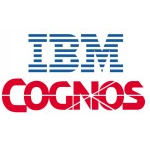
Last weekend, my team was able to successfully migrate Georgetown’s IBM Cognos software from version 10.1 to 10.2.1. Seems like a piece of cake, right? Well, in our case, not exactly. I thought I’d share a bit about our experience in the event that it may help others.
Our IBM Cognos upgrade effort followed a previously failed attempt to upgrade. After much deliberation with IBM, it was decided that the failed attempt to upgrade primarily related to the fact that we had extremely old hardware and were running on a dated Solaris OS. Still being fairly new to Georgetown, I dug in a bit further. Indeed – our hardware was ancient and the Solaris OS was preventing us from getting much needed support from the vendor (IBM). We had previously implemented IBM Cognos in 2005 on version 8.4. Then, in 2010, we migrated on the same hardware, to version 10.1. Given these facts, I was dealt a server which was 8-9 years old, and software that hadn’t been upgraded in at least 3-4 years.
Through several conversations with IBM SMEs, we settled on a proposed 6 server architecture (depicted below). I’ve removed the details for security reasons, but we designed these machines down to the processor and RAM level. We also had conversations with IBM about what OS would be best suited for us longer term. We landed on Windows Server 2012.
For anyone interested, below are the series of steps that we followed to get this project off the ground:
- Proposed business case and secured funding
- Assessed the current state architecture internally. Made an educated decision on what we felt that we needed to support our business requirements for the future state. We were specific – down to the processor and memory level for each machine in the architecture. We lessened the hardware requirements for the DEV and TEST tiers. QA and PROD tiers were identical.
- Validated the architecture with the vendor (IBM) and ensured that they supported and recommended the approach.
- Altered the architecture post vendor recommendation.
- Based upon the agreed architecture, engaged the IBM sales representative to identify the correct licensing. This step will make your head spin a bit. IBM calculates license costs on a Processor Value Unit (PVU) basis. Effectively, it is a proprietary formula used to calculate how much processing power resides in each of your machines. This done by processor and accounts for cores.
- Negotiated and completed the procurement process. Thankfully, IBM has some decent higher education discounts. For future operating budgets, please be aware that the licensing does not stay flat. You’ll typically see a 4-5% increase per year. Also, for renewals, you might consider working through a business partner (such as CDW-G) to save money on the renewal.
- Setup the infrastructure. We chose to do this in a virtual environment. We also setup the architecture in DEV, TEST, QA, and PROD.
- Configured the IBM Cognos software (in this case, 10.2.1). This is more intensive across the distributed architecture, but well worth the performance and scalability benefit.
- Tested, tested, and tested. We started at the DEV tier and slowly promoted to TEST, QA, and then PROD. If you have an existing environment already in production, you may consider running the two production environments in parallel for a short period of time. We did this for about a week and then recopied the content store from the live environment to the new production environment. It provided an additional level of comfort for testing.
- Go-live and enjoy the new features of IBM Cognos 10.2.1. Please note – we decided to go-live with 10.2.1 on our existing 32-bit packages. As a next phase, we are migrating all of the 32-bit packages to 64-bit. You may consider this during the testing phase and deploy all at once.
What tips do we recommend?
- Ensure your SSL certificate is installed across all of the machines in your architecture. If you only install on the gateway server(s), the images on some of your reports will be broken. They attempt to run via port 80 (HTTP) instead of port 443 (HTTPS) and are blocked.
- The governor limit on packages is reset. We had to go in a modify each package to reset this limit.
- The portal may seem slower initially. Allow the content store several business days to optimize and reindex. You’ll then see an improvement.
- Don’t forget to import the new visualizations and install the mobile capability. Very cool stuff!
- Collaborate with IBM. They may offer to provide an overview of the new features to your team. If you have budget, they may also have optimization recommendations.
So what are our favorite features thus far?
- External object store for report output – helps tremendously with the size of our content store.
- New visualizations – very cool!
- We also enjoy the Cognos Mobile app which allows us to share content on mobile devices and push alerts.
Here’s the full list of new features from IBM:
http://pic.dhe.ibm.com/infocenter/cbi/v10r2m1/index.jsp?topic=%2Fcom.ibm.swg.ba.cognos.ug_cra.10.2.1.doc%2Fc_asg_new_10_2_1.html






